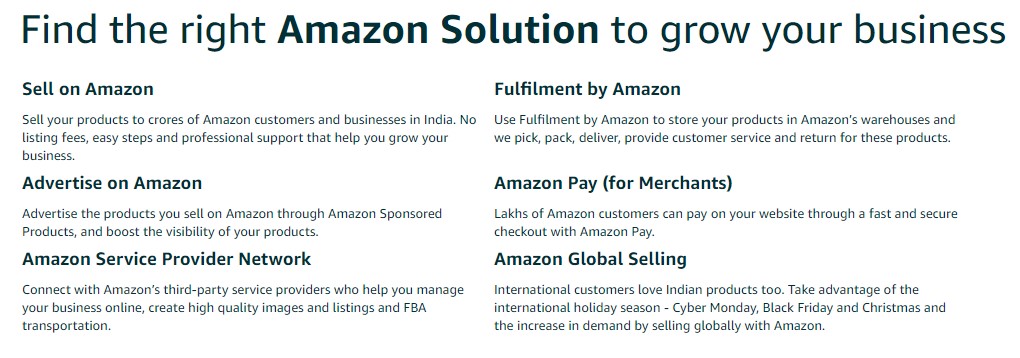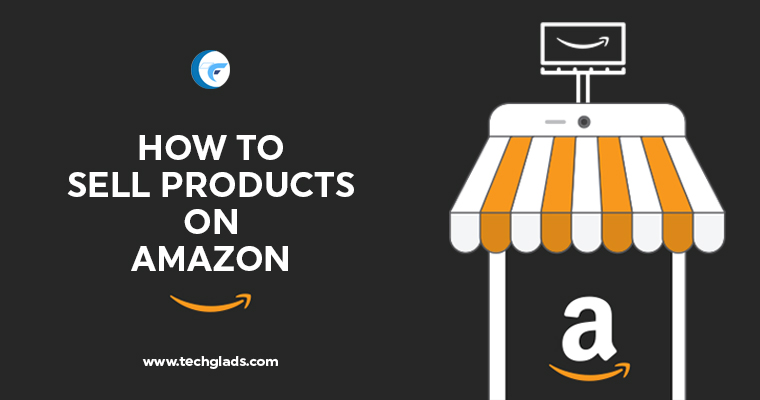Amazon
Amazon is the leading e-commerce company in the world. It is trusted by people worldwide, and they do offers various services like Amazon Mechanical Turk, Amazon AWS and so on. In America, amazon holds about 7.7% economy of the country. There are so many reasons why most of the people use amazon. Let’s see some major parameters that keeps Amazon as no.1 in the world.
Why Choose Amazon?
- Amazon sells all the product from listing from alphabet A to Z.
- It provides bunch of offers to its customers
- Faster delivery time
- Replacement of damaged products is available in a shorter period than any other e-commerce company
- Even if you search any product in Google, the amazon will rank first in the search results.
The another best thing in Amazon is that, you cannot only be a customer. You can also be a seller in Amazon. It provides various opportunity to sell the products. As comparing to other e-commerce companies, to be a seller in Amazon is very simple process.
How to sell a product in Amazon?
There are 5 simple steps involved in creating a seller account in Amazon. The steps are:
- Create Amazon Seller Account
- Listing of Products
- Managing the inventory
- Deciding the type of Shipping
- Earn Money

STEP 1: Create Amazon Seller Account
Sign Up for Amazon Seller – services.amazon.in
To be a seller in Amazon, you should have a Amazon seller account. The person who is creating a seller account should provide the business details and personal details. After the process of creating an account, the user may sign up in the Amazon seller account and choose the type of seller depending on the type of business.
- Individual Seller
- Pro-Seller
- Vendor
Individual Seller:
If a person owns a small business account or the person is selling only fewer than 40 items/month, then he/she can choose the individual seller account.
Pro Seller:
If a person owns a business account and selling about more than 40 items, he/she can choose the Pro Seller account.
Vendor:
If a person manufactures the product and sells the product, then he/she can choose the Vendor account. They are called as wholesaler to amazon. If the product goes out of stock, then will order from you
Seller Profile:
After creating the seller account successfully, the person should fill the details under three categories. They are
- About Seller Section
- Seller Logo
- Policies (Return, Refund)
Seller Section:
This is the place where the buyers meet the sellers. In this section, there are some details about the business, its type etc.,
Seller Logo:
Here, the customers will see the logo of your brand. The logo doesn’t contain any URL in it.
Policies (Return, Refund):
At this section, the customers will see the policies about the returning of the products and the amount refunding. According to Amazon policies, the product can be returned to the sellers due to the damage, different product etc., should be within minimum 30 days.
STEP 2: Listing of Products
The listing of products is the next process after setting up the seller account. In Amazon, if the seller is selling a single product is called as Individual Seller. They can list the product at Amazon Marketplace at a single time.
If the seller sells more than one product, then they will be calling as Professional Seller. They can multiple variations of a product in the market.
Apart from the passage mentioned above, there is another criteria present in the Amazon marketplace.
If the selling product is already present in the Amazon marketplace,the listings, unique code of the products will automatically done by Amazon itself. When the similar product runs out of stock, the seller’s product will be ranked higher in the search box of the Amazon
Similarly, if it is a new product then the seller should provide details such as GST no/PAN ID. And also the seller can be allowed to provide product description, product terms and addition with search terms.
STEP 3: Managing the Inventory
After listing the products, the seller can be able to collect the details such as no.of products sold, products in stock, performance measurement, new orders. In Amazon marketplace, you can also do SEO which helps you to list your products very quickly in the search results.
In addition, you can also use some inventory tools such Seller Engine and Vendio. You can also make ads in the Amazon marketplace by using Sponsored Ads. This can be done by Digital Marketing.

STEP 4: Deciding the Type of Shipping
Listing the products and managing the inventory are the toughest part of selling in Amazon. Once, the customer places an order the next step is to get the product into their hands.
Amazon provides two types of shipping for products. They are:
- Fulfilment By Merchant
- Fulfilment By Amazon
FBM (Fulfilment By Merchant):
Self – shipping is the best option for small sellers. And also the budget to spend on getting the products into customer hands is also less. The main disadvantage of this type of fulfilment is they can’t provide any membership such as Amazon Prime. They could easily lose the customer, if there is absence of support from the seller
FBA (Fulfilment By Amazon)
It provides world class fulfilment centres, bigger warehouse, customer support, and also makes the business to grow faster. Advantages of FBA are:
- Prime Eligibility
- Super Saver Eligibility
- Higher Product Rankings etc.,
STEP 5: Earn Money
Amazon is a great place, to expand your business. Amazon will deduct all applicables from the sales for every two weeks. They will deposit the balance money in the account for every two weeks and will send an email notification every time, when you receive a payment.
List of Amazon seller fees that will be deducted from the sales are:
- Monthly Seller Fees
- Referral Fees
- Returns Processing Fees
- Stock Removal Fess
- Inventory Placement Fess
- FBA Export Fees
- Pick & Pack Fees
- Monthly Storage Inventory Fees.

